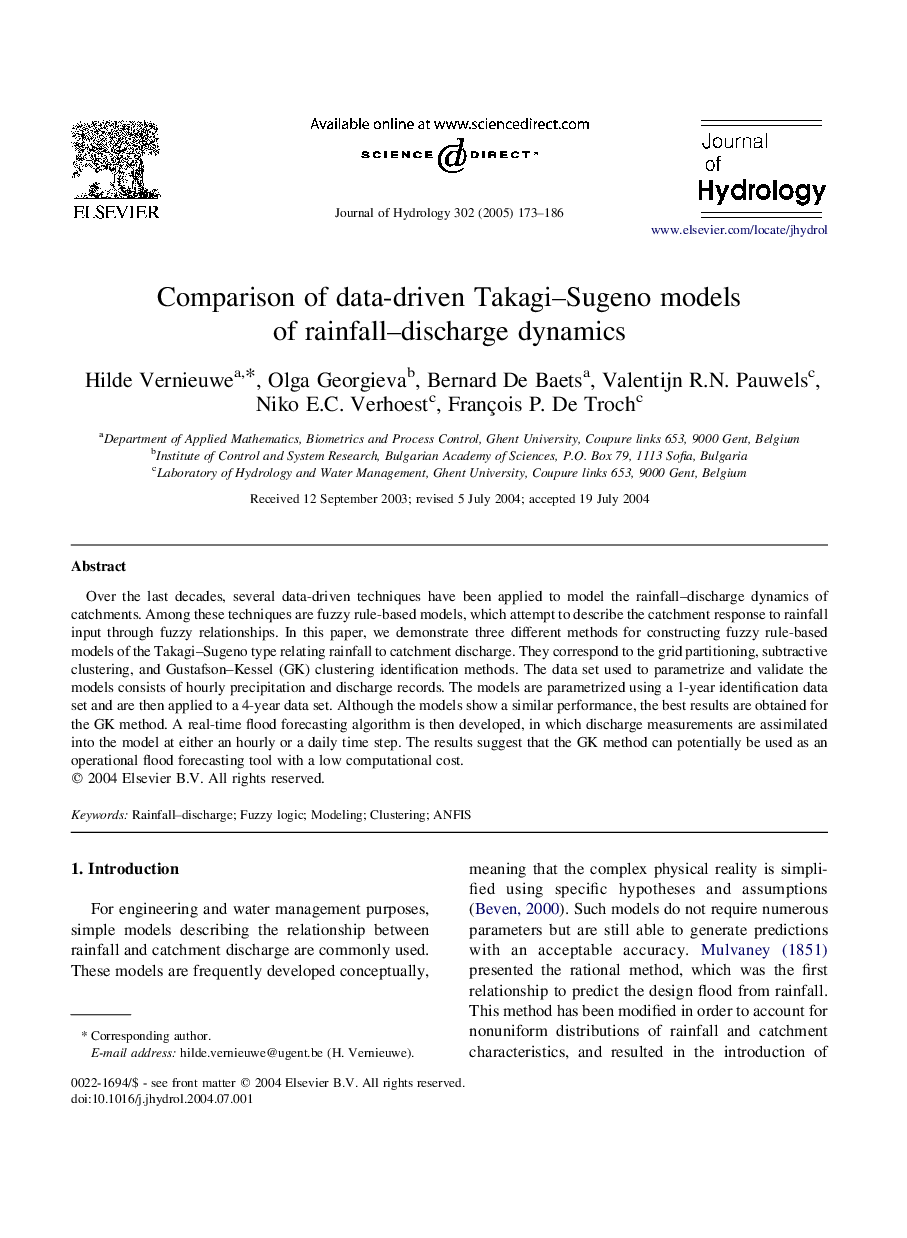| Article ID | Journal | Published Year | Pages | File Type |
|---|---|---|---|---|
| 9491435 | Journal of Hydrology | 2005 | 14 Pages |
Abstract
Over the last decades, several data-driven techniques have been applied to model the rainfall-discharge dynamics of catchments. Among these techniques are fuzzy rule-based models, which attempt to describe the catchment response to rainfall input through fuzzy relationships. In this paper, we demonstrate three different methods for constructing fuzzy rule-based models of the Takagi-Sugeno type relating rainfall to catchment discharge. They correspond to the grid partitioning, subtractive clustering, and Gustafson-Kessel (GK) clustering identification methods. The data set used to parametrize and validate the models consists of hourly precipitation and discharge records. The models are parametrized using a 1-year identification data set and are then applied to a 4-year data set. Although the models show a similar performance, the best results are obtained for the GK method. A real-time flood forecasting algorithm is then developed, in which discharge measurements are assimilated into the model at either an hourly or a daily time step. The results suggest that the GK method can potentially be used as an operational flood forecasting tool with a low computational cost.
Keywords
Related Topics
Physical Sciences and Engineering
Earth and Planetary Sciences
Earth-Surface Processes
Authors
Hilde Vernieuwe, Olga Georgieva, Bernard De Baets, Valentijn R.N. Pauwels, Niko E.C. Verhoest, François P. De Troch,
